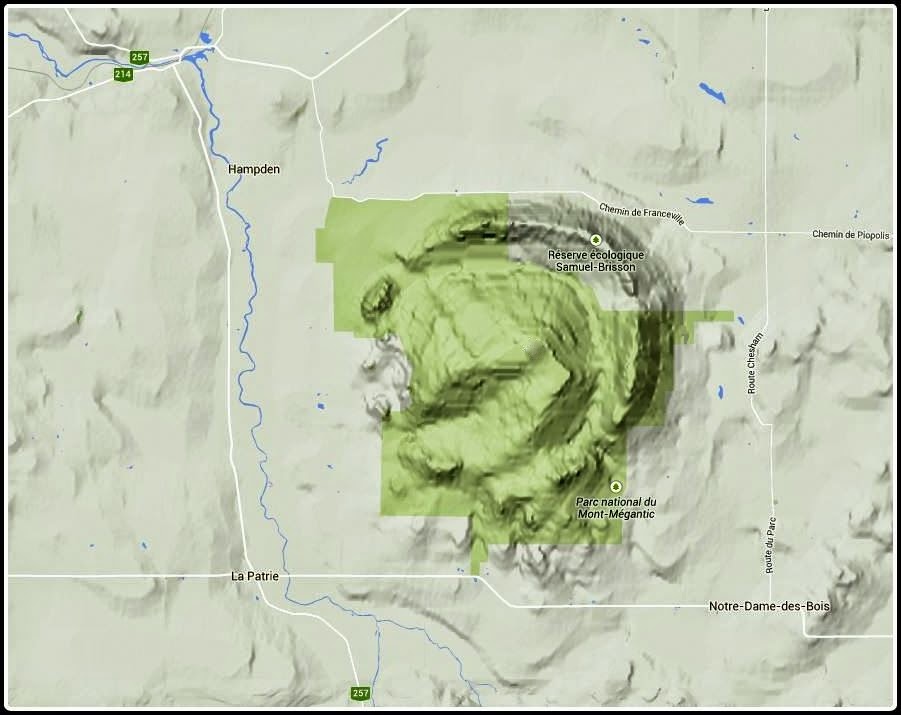Thanks
to info provided to me a few months ago by a Facebook friend (Suzanne Reihs
Moore), my wife and I recently spent an enjoyable afternoon walking for several
miles at a place called Old Hill Village.
It's located on the western edge of the Lakes Region, just a short
distance from the present day village of Hill, NH. We began our trek from a parking area at the Needleshop Recreation Area located at the end of Old Town Road.
The village of Hill that existed pre-1930 was
representative of many small, rural, New England towns. There was one major tree-lined road which
extended along the contour of the Pemigewasset River. The Boston and Maine Railroad ran along the
river's bank and was a major source of public transportation and shipping.
Small farms dotted the surrounding countryside. Most residents
worked in town, although some commuted to nearby towns such as Bristol and Franklin.
In
February 1937, the residents of Hill learned that their village would have to
be either disbanded or relocated in order to accommodate the Franklin Falls dam
project. The citizens carefully
considered all their options and by January 1940, they had formed an
association, purchased land, and began construction of a new village on higher
ground just a short distance away.
Amazingly, by June 1941 a new town hall and school were built, along
with streets, a water system, and 30 houses.
Within
the Old Hill Village, there are no actual buildings or houses remaining since
all structures had to be razed to ensure that there would be no manmade debris in
the impoundment area for the Franklin Falls flood control project. Only 14 buildings from Old Hill were saved. This was done by moving them to higher ground
using a railway and a winch turned by horses!
The Franklin Falls dam project was designed to prevent flood damage to downstream communities during times of high water. The former village of Hill was "sacrificed" since it was located within an area that would become what is known as a "dry bed reservoir". Throughout the year, some water is always stored behind the dam, but most of the river water is allowed to flow through the dam. However, after a large rainfall or a period of rapidly melting snow, more water is impounded behind the dam and it fills the "dry bed reservoir". Once conditions improve, the impounded water is slowly released through the dam.
The illustration shown below depicts the general location of the Old Hill Village and the present-day town of Hill, NH.
The Franklin Falls dam project was designed to prevent flood damage to downstream communities during times of high water. The former village of Hill was "sacrificed" since it was located within an area that would become what is known as a "dry bed reservoir". Throughout the year, some water is always stored behind the dam, but most of the river water is allowed to flow through the dam. However, after a large rainfall or a period of rapidly melting snow, more water is impounded behind the dam and it fills the "dry bed reservoir". Once conditions improve, the impounded water is slowly released through the dam.
The illustration shown below depicts the general location of the Old Hill Village and the present-day town of Hill, NH.
 |
| Illustration depicting the general location of the Old Hill Village and the present-day town of Hill, NH |
For
anyone interested in learning more about Old Hill Village, the Hill
Historical Society has some reasonably priced maps/publications that are very
informative and useful. (Click HERE for a link to their website.)
Shown below are a few photos taken on the day that my wife and I visited Old Hill Village.
Shown below are a few photos taken on the day that my wife and I visited Old Hill Village.
 |
| Historic marker near south end of Old Hill Village |
 |
| An old foundation and stairs |
 |
| In the northern part of Old Hill Village you can still see the sidewalk the ran along the main street of town |
 |
| Still standing in many places are stately trees that once lined the main street of Old Hill Village |
 |
| A field behind the main street that might have once been someone's backyard in Old Hill Village |
 |
| A brook that runs through Old Hill Village was used as a power source for many things, including a saw mill and a grist mill. |
 |
| Abutment for bridge that once crossed the Pemigewasset River and linked Old Hill Village and Sanbornton, NH |
To sum it up, our exploration of
Old Hill Village was a unique and enjoyable experience. We spent a couple of hours walking along the
main street of town, and along some of the pathways near the river. However, there are still other areas within
the Old Hill Village area that we hope to explore on another visit.
////////////////////////////////////////////////////////////
////////////////////////////////////////////////////////////
ADDENDUM
(added 28-Oct-2014):
This
addendum is for those of us who enjoy studying maps! The composite map below shows the village of
Hill as it appeared on topographic maps before relocation (left panel) and after relocation (right panel).
 |
| (Click/tap to enlarge) |

























